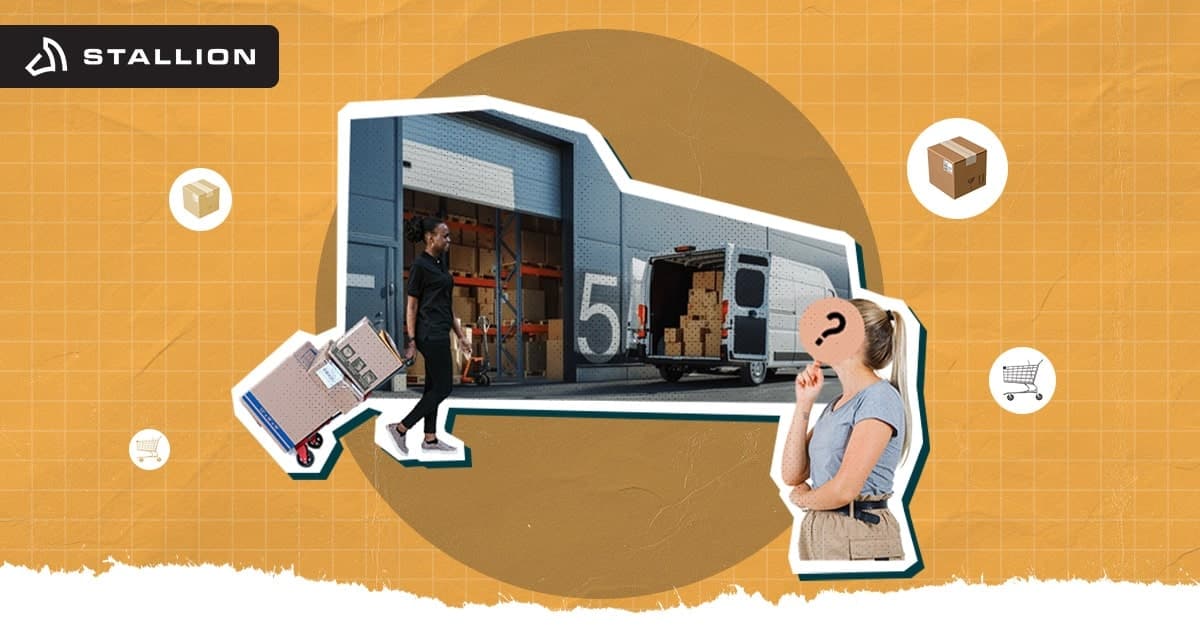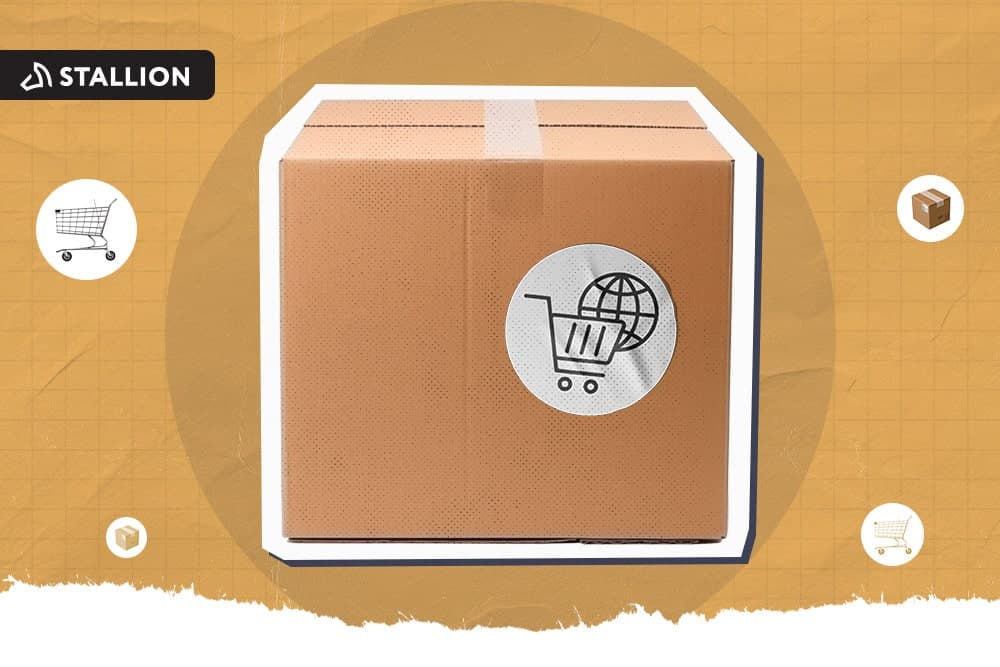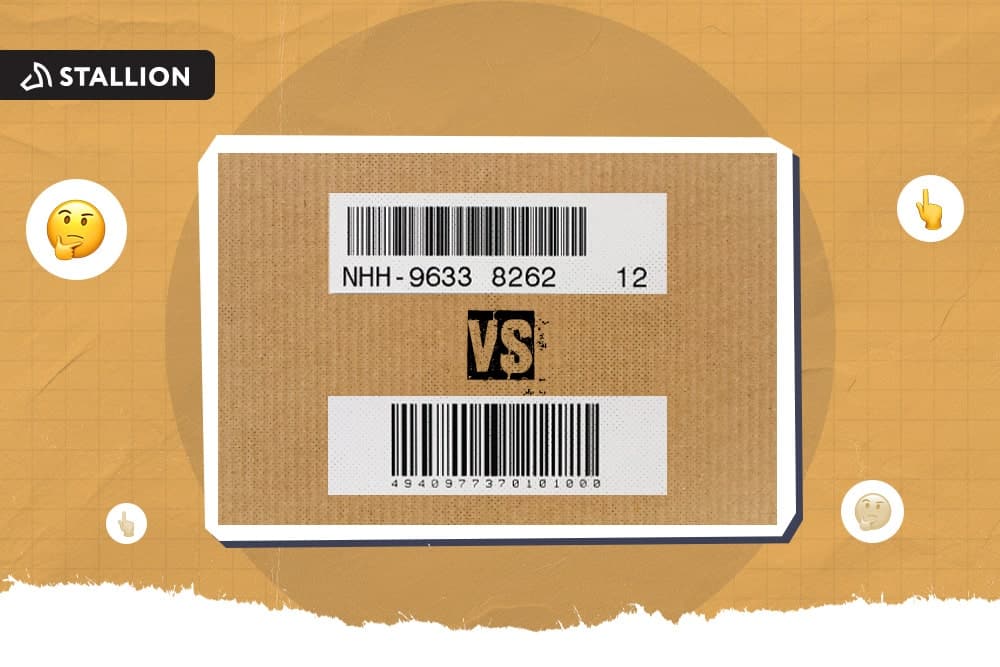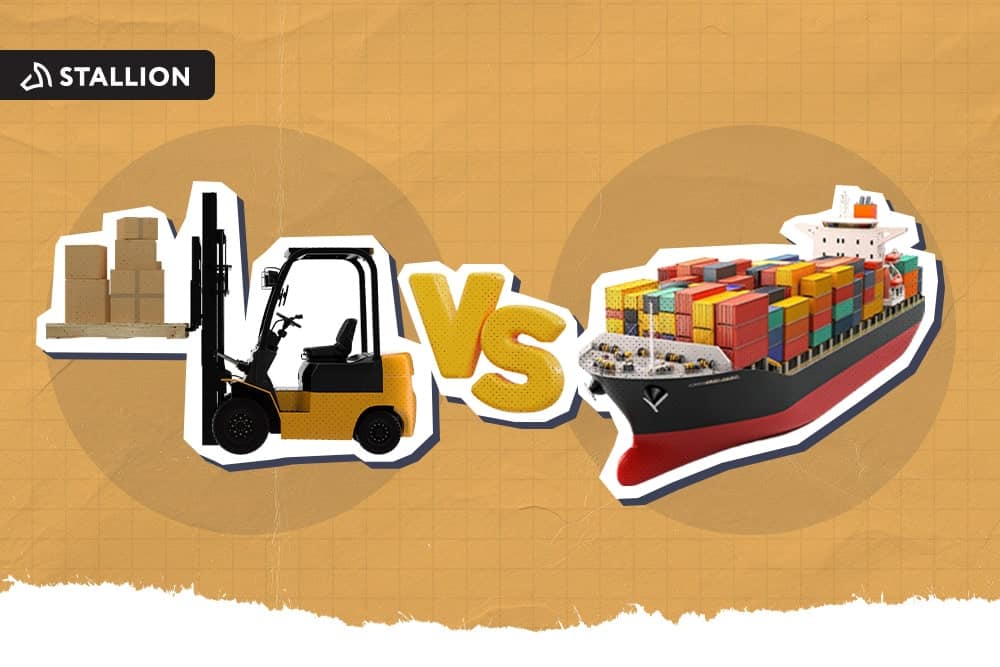
Running a successful online store sounds fantastic, right? However, fulfilling orders can quickly become a time-consuming headache. Good thing services like a fulfillment center can lift this burden from us.
But what is it? How does it work? This guide discusses the world of retail fulfillment, explaining how it can revolutionize your business and elevate your customer experience.
A fulfillment center is like a super-powered stockroom for online sellers. It stores your products, waits for customer orders, and then grabs, packs, and ships them out—all so you can focus on running your business!
These centers handle everything from receiving inventory to slapping on the shipping label. Think of them as extensions of your business, letting you focus on sales while they handle the back-office shipping rush.

Fulfillment centers are the backbone of efficient eCommerce operations. They essentially take over the logistics once a customer orders an item. This process allows online businesses to focus on other crucial aspects like product development and marketing.
Here's a breakdown of the key functions of fulfillment services:
Sellers ship their products to the fulfillment company on pallets or boxes. Upon arrival, staff check the shipment against a packing list, scan items for tracking, and store them efficiently for quick picking when a customer orders.
In short, the fulfillment company is responsible for managing the inventory of the items it receives, packs, and delivers.
The warehouse space of the inventory services is not designed for storing inventory on a long-term basis. However, sellers still use them that way for a few reasons.
Every fulfillment center has a different way of processing orders. Below are the typical steps included in the order processing workflow:
Fulfillment centers act as shipping hubs. As a seller, you have two options when it comes to choosing your shipping partners.
Once packed and labelled, the staff hands off the orders to the chosen carrier for final delivery. The seller (or center with authorization) selects the carrier based on cost, speed, and service.
Customers typically initiate a return online, get a return label, and ship the item back. Upon arrival, the center inspects the product (damage, reason for return). If okay, it's restocked or refurbished. Damaged items are handled according to seller instructions (refund, donate, etc.). Customers are then refunded or receive a replacement.
Here's how the fulfillment center works:

Here are two main options:

A fulfillment center operates with a clear order flow process. It's a well-rehearsed supply chain system, and each step is crucial for efficiency and accuracy. Without it, everything will be chaotic: misplaced items, delayed deliveries, and frustrated customers.
This flow ensures orders zip through the system - from receiving the electronic order to picking, packing, and quickly getting the orders out the door. It keeps the costs down, makes sellers happy, and puts smiles on the customers' faces when their packages arrive on time.

Order fulfillment services rely on a powerful tech toolbox to keep things humming.
Here are 5 essential tools that streamline their processes:

While fulfillment centers utilize robots and automated systems, they still have a human workforce to ensure the quality of their services.
The primary role of humans in fulfillment centers is to perform the tasks best suited to them. For example, they handle delicate responsibilities that can make or break the company. In addition, humans take over functions that require problem-solving.
What are these problem-solving tasks? One example is interacting user interfaces. Warehouse staff interact with tablets or screens, guiding them efficiently through order picking and packing.
In addition, humans oversee automation, ensure smooth operation, catch errors, and handle customer inquiries. While chatbots and automated responses are popular nowadays, many customers do not enjoy these features. Therefore, adding a human touch can increase customer satisfaction.
Overall, fulfillment centers invest in training to ensure workers can work effectively alongside technology, adapting to new tools and processes.
Related articles: Why are Micro-Fulfillment Centers Becoming Popular?

Here's a breakdown of the key differences between warehousing and fulfillment centers:
Warehousing is meant to store products for the long term. It mainly focuses on inventory management and storage efficiency. Meanwhile, fulfillment centers are designed for rapid order processing and distribution.
Warehousing operations include receiving, shelving, and safeguarding goods. On the other hand, fulfillment centers are focused on efficiency and speed. They use advanced technology and systems to streamline the order fulfillment process, ensuring quick turnover and timely deliveries.
Most warehouses use basic technology for tracking and storage, like barcode scanners. Oppositely, fulfillment companies use advanced technologies to handle faster order processing. They utilize automation, robots, and cutting-edge software to quickly pick, pack, and ship orders.
A simple warehouse space can be slower because it stores goods for long periods. Conversely, a fulfillment center moves faster because it follows a center timeframe. Shipping time is crucial for many eCommerce companies.
Therefore, fulfillment providers should be able to complete shipping orders faster to guarantee customers receive their orders as soon as possible.
Warehouses mainly offer inventory storage services. For example, they store large quantities of seasonal items until needed. On the other hand, a fulfillment center provides more services, like picking, packing, and shipping orders.
Most warehouses have a business-to-business (B2B) model, which means they mostly serve manufacturers, wholesalers, and eCommerce retailers. Fulfillment centers have a business-to-customer (B2C) model structure.
This means that they handle orders and ship them to customers on behalf of the eCommerce business.
Warehouses don't usually integrate directly with online stores. They just store products until needed. For example, a business might keep extra stock in a warehouse and manage online orders separately.
A fulfillment center, however, integrates seamlessly with online stores. It automatically processes orders as they come in.
Warehouses typically partner with freight companies and shipping carriers to transport goods in bulk to and from their facilities. They arrange to transport oversized shipments, often coordinating with carriers for efficient logistics and cost-effective shipping solutions.
Fulfillment centers also partner with shipping carriers, focusing more on individual orders and quick deliveries.
They integrate closely with carriers to streamline picking up packages and ensure prompt customer delivery. This partnership is crucial for meeting fast shipping expectations in eCommerce.


Fulfillment services offer a range of advantages that can significantly boost your eCommerce business. Here are some key benefits:
Fulfillment services become cost-efficient through automation. The technology used in operations, like WMS, has significant benefits without additional labour costs. For example, automation can handle repetitive and labour-intensive tasks. Therefore, you don't have to hire workers to complete these responsibilities.
Shared infrastructure also eliminates renting warehouse space, buying equipment, or hiring dedicated staff. It's like splitting the logistics bill with other sellers, making it a win-win for efficiency and your wallet.
As for shipping, fulfillment services offer cheaper shipping rates due to their high shipping volumes. They pack orders efficiently to avoid extra fees for bulky packages and use fewer packaging materials, reducing shipping costs.
By storing inventory in well-placed centers, they cut down on shipping distances and costs. Advanced software helps plan efficient shipping routes and choose the best carriers for each package.
These steps help fulfillment services offer lower shipping prices while ensuring quick and reliable customer delivery.
ECommerce fulfillment services help businesses scale by completing various tasks on behalf of the sellers. They manage storage, pack, and ship products as orders grow.
For example, an online store starting small might store and ship products themselves. As they get more orders, fulfillment services can take over these tasks, handling larger volumes without needing extra staff or space.
This allows the business to focus on growth and customer service. If a store runs a big promotion and suddenly gets a lot of orders, the fulfillment service can handle the spike, ensuring orders are processed quickly without overwhelming the business.
An order fulfillment center helps improve customer experience through various ways. For one, it ensures fast and accurate order processing. When a customer orders an item online, the fulfillment service quickly picks, packs, and ships it, often within a few days.
It also provides real-time tracking, so customers always know where their order is.
This perk is an advantage, especially if there is a surge in shipping volume. You don't get overwhelmed by the number of orders coming in.
Fulfillment companies also have efficient packaging systems, which reduce the chance of damaged items. This means that you don't only save on shipping costs but also reduce the stress of worrying about your packages.
Plus, fulfillment centers handle returns smoothly, making it easy for customers to exchange or return products. All these factors lead to happier customers who are more likely to shop again.
Fulfillment services handle all the logistics tasks on your behalf, freeing up your time and resources. You don't have to spend hours packing and shipping orders. Instead, you can focus on creating new products or improving existing ones.
This also allows you to dedicate more time to marketing efforts. You can allot more time to make creative advertising campaigns, engage with customers on social media, and optimize your website.
Fulfillment services take care of the logistical tasks, allowing you to concentrate on growing your business and improving your products and marketing strategies.
Stallion is a leader in the Canadian e-commerce logistics industry. Our fulfillment feature is open to a few select clients but soon, Stallion will expand its fulfillment services to the public.
Reach out to our support team to see if you are eligible to avail our fulfillment rates.
A fulfillment center is critical to the modern eCommerce ecosystem. It plays an important role in ensuring products are stored, processed, and shipped to customers. Regardless of your business size, taking advantage of fulfillment centers can provide numerous benefits. You can have the infrastructure needed to scale operations and meet the demands of today's dynamic market.
Aman looks after the content marketing department at Stallion Express. He is passionate about helping businesses grow by providing informative and up-to-date trends in the eCommerce industry. Outside the office, you can find him on the soccer field cheering on Real Madrid.



Can our fellow Torontonians relate?
-
#smallbusiness #business #entrepreneur #socialmedia #shipping #ecommerce #canadianecommerce #shopify #poshmark #b2b #saas #etsy #ebay #canada #canadiansmallbusiness #shoplocalcanada #entrepreneur
#toronto

Here’s your quick hassle free shipping from 🇨🇦 to 🇺🇸 as a business owner!
-
Any questions?! Leave them 👇🏻 and save this video so you don’t forget!
-
#smallbusiness #business #entrepreneur #socialmedia #shipping #ecommerce #canadianecommerce #shopify #poshmark #b2b #saas #etsy #ebay #canada #canadiansmallbusiness #shoplocalcanada #entrepreneur

Meet @drinkbenny a 🇨🇦 female founded energy drink brand! Instead of focusing on their products, they’re taking a unique approach by hosting in person events in different Canadian cities to offer an experience for their community 🧡
-
What are your thoughts on in person events? 💭
-
#smallbusiness #business #entrepreneur #socialmedia #shipping #ecommerce #canadianecommerce #shopify #poshmark #b2b #saas #etsy #ebay #canada #canadiansmallbusiness #shoplocalcanada #entrepreneur

Do you know the difference between DDU and DDP when shipping internationally 🌏 ?
-
Questions? Leave them below! 👇🏻
-
#smallbusiness #business #entrepreneur #socialmedia #shipping #ecommerce #canadianecommerce #shopify #poshmark #b2b #saas #etsy #ebay #canada #canadiansmallbusiness #shoplocalcanada #entrepreneur

Here’s a quick hack to save time from choosing multiple postage options
↪️ Turn on the lowest postage rate automation to save you time!
-
Questions? Leave them below! 👇🏻
-
#smallbusiness #business #entrepreneur #socialmedia #shipping #ecommerce #canadianecommerce #shopify #poshmark #b2b #saas #etsy #ebay #canada #canadiansmallbusiness #shoplocalcanada #entrepreneur
